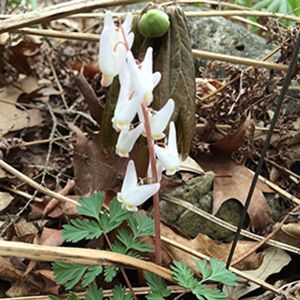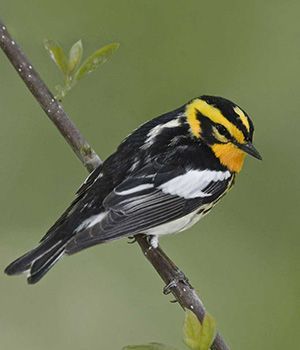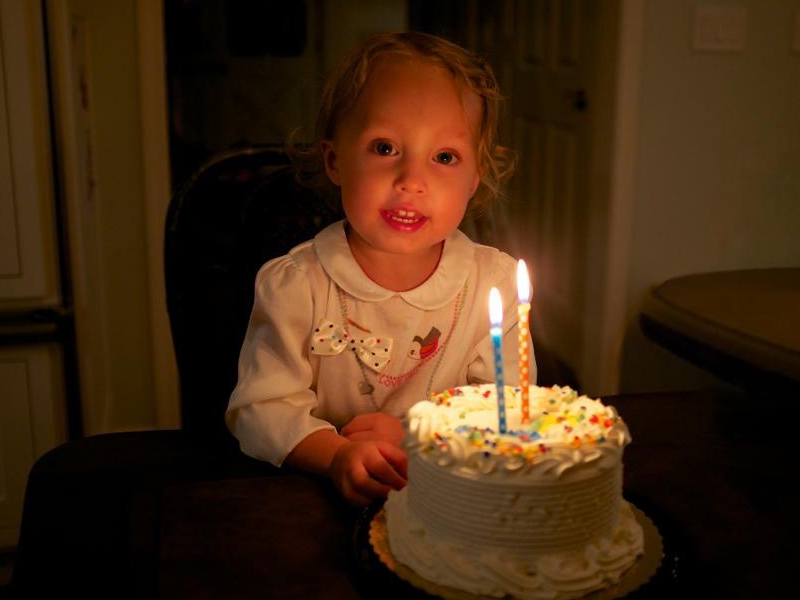
"There is no description, no image in any book, that is capable of replacing the sight of real trees, and all the life to be found around them, in a real forest. Something emanates from those trees which speaks to the soul, something no book, no museum is capable of giving. "—Dr. Maria Montessori
We may have made it to April, but it certainly has not yet looked or felt like spring in the Midwest. Frigid temperatures, gloomy skies, and occasional snow provide ample incentive to stay indoors with a warm cup of tea, silently begrudging the cumbersome winter coats taking up space in the closet. While I can think of nothing better than reading a good book indoors on days like these, the naturalist in me is immediately reminded of why April is one of the best months of the year for revitalizing our connection with nature.

Starting now and continuing into May, Lake County is host to two groups of unique, yet very temporary, wild visitors. The arrival of 1) spring ephemeral wildflowers and 2) migrating songbirds is truly a wonder to behold. Any day now, small wildflowers will begin carpeting the forest floor, and high above them, vibrantly-colored migrant birds, here from Mexico and South America, will dart amongst the tree branches as they continue on their journey north. All at once, an incredible diversity of wildlife and color springs into our neighborhood woodlands (pun intended!).
Much to my dismay, these wild visitors disappear almost as quickly as they arrive, within a few weeks. However, as with any nature activity, all you need is nice weather and the desire to go for a walk. So dust off those binoculars, grab your children, and head to the woods before the wildflowers and migrating birds are gone!
Whimsical Wildflowers
Walking into a forest, our natural inclination is to look eye level and above at the trees towering over us. However, in the same way that Maria Montessori championed the child’s development as a holistic endeavor (intellectually, emotionally, socially), we miss a large portion of the picture if we ignore the forest floor.

Amid the decaying leaf litter found there, highly specialized, fast-growing plants—collectively called spring ephemerals—make a grand entrance. In the brief window of time between the final snowmelt and before the trees produce a full canopy of leaves, ephemeral wildflowers take advantage of the sunlight hitting the forest floor. Seasoned opportunists, these wildflowers race to complete their entire life cycle before the tree leaves completely shade them out at the end of May.
Two of my favorite spring ephemerals are Bloodroot and Dutchman’s Breeches (pictured), both of which have unusual characteristics. Standing only 6 inches tall, these two plants bloom for a grand total of two weeks! If timed correctly in mid-to-late April, a walk through the forest will reward you and your children with a beautiful display of white flowers from these plants—a welcome contrast to the brown forest floor and a bold declaration of the start of spring.

Magical Migration
In a similarly rapid fashion, millions of birds travel north from Mexico and South America, through the United States, and on to Canada each year. For most areas of the United States, including Lake County, these migrants are only passing through for a few short weeks in April and May. Hundreds of neotropical songbirds, in particular, provide a magnificent display of reds, oranges, yellows, and blues. How many can you and your children spot?! The transcontinental voyages made by these birds each year are excellent examples of the interconnectedness of living organisms on Earth, a principal tenet of Montessori’s Cosmic Education. Sharing this knowledge and experience with your child would further reiterate the importance of a global perspective and encourage appreciation for a larger community of humans, plants, and animals.
Some of the birds you can expect to see on your outings are the Eastern Phoebe, White-crowned Sparrow, Cerulean Warbler, Scarlet Tanager (pictured), Indigo Bunting, Yellow-rumped Warbler, American Redstart, Magnolia Warbler, Baltimore Oriole, and Blackburnian Warbler (pictured), but this is certainly not an exhaustive list! Lucky for us, there are several natural areas in Lake County perfect for bird watching. I would recommend any of the Open Lands preserves, as well as Middlefork Savanna and Illinois Beach State Park to start, but don’t stop there! See where your exploration takes you...

Recommendations and Upcoming Events
- ebird.org is a great resource for gathering information about which birds have been spotted in Lake County. Not only can you see posted observations by other birdwatchers to target your exploration of this area, but you can also create your own free account and keep track of the birds you and your children have seen. Scientists often use data from eBird to track long term trends in bird migrations. Data collected by the general public, also known as citizen science, is of great value to the field of ecology.
- The climate in Lake County is very similar to that of Wisconsin, which is why I would recommend The Wildflowers of Wisconsin and the Great Lakes Region field guide for identifying plants in this area. The guide is small enough to carry with you on a walk, with useful information and helpful pictures.
- Earth Day is right around the corner! Be sure to visit the Chicago Botanic Garden to celebrate! There will be lots of fun activities for kids and as an added bonus, McDonald Woods has a beautiful display of spring ephemeral plants.
- Lake Forest Open Lands is also hosting a volunteer work day on Sunday, April 22 from 1-3 p.m. at Mellody Farm Nature Preserve for Earth Day. Participants can expect various hands-on restoration activities, such as pesky buckthorn removal, as well as nature hikes and a tree planting discussion.
- Montrose Beach in Chicago is an international bird hotspot and one of the best places to go to see a diversity of birds throughout the year. Migrating birds tend to travel along Lake Michigan and the trees/shrubs right off the water provide them with insects, berries, and shelter!
- If you are in the market for binoculars, there are several quality brands for any budget and for any experience level (including kids!). An important consideration is the magnification. For the recreational birder, I would recommend a magnification of 8x32. My personal binoculars are 8x32, and they are perfect for my birding passion!
- Peterson Reference Guide to Birding by Impression
- Backyard Bird Secrets for Every Season
- Wildlife at Your Back Door
- Secret Lives of Common Birds
Abbey White is a visiting naturalist at Forest Bluff School. With a master’s degree in Plant Biology and Conservation from Northwestern University, Abbey is providing our school community with information on starting gardens, fostering our prairie, and more about the natural world around us this spring.


